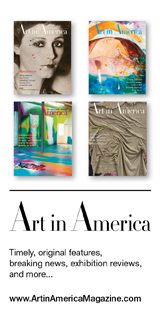A feat of elegant design wowed elite architects and promised to bring education to poor children in Nigeria. Then it collapsed.
News from the Web
Kunlé Adeyemi hustled across the ballroom in Venice, Italy, with a wide smile on his face. He wore a tailored tunic and pants—classic Nigerian menswear—cut from glossy brown fabric. The staid crowd that had gathered to witness his coronation applauded politely as he beckoned his team to join him on stage. There Adeyemi embraced each member of the jury that had named him the victor and seized his prize: the Silver Lion, awarded to a “promising young participant” in the International Architecture Exhibition, better known among the global design elite as the Venice Biennale.
It was May 2016, and the Biennale’s theme was “reporting from the front.” To curator Alejandro Aravena, “the front” encompassed spaces both literal and figurative. Aravena was the most recent recipient of his field’s top honor, the Pritzker Prize, and he designed buildings that prioritized public interest and social impact. He wanted his Biennale to crack open assumptions about architecture by drawing on the talent, knowledge, and imagination of those bearing witness to the world’s most pressing problems. “We are not interested in architecture as the manifestation of a formal style,” Aravena said before the exhibition, “but rather as an instrument of self-government, of humanist civilization, and as a demonstration of the ability of humans to become masters of their own destinies.”
Adeyemi, at whom Aravena beamed with pride during the award ceremony, was one of the Biennale’s darlings. The 40-year-old Nigerian was given his prize for designing a school in Makoko, one of the largest slums in Lagos. Described by the Silver Lion jury as “at once iconic and pragmatic,” the school was meant to serve poor children whose neighborhood the government wanted to demolish. What made it singular was its location: The school floated on the water that envelops much of the coastal megacity. The structure suggested an alternative to tearing down slums to make way for development, a new approach for elevating instead of erasing the poor. Thanks to Adeyemi’s innovative design, the children of Makoko had a space in which to expand their minds and horizons.
In his acceptance speech, Adeyemi compared his project’s setting to the Biennale’s. “It’s said that the early settlers of Venice were fishermen in the marshy lagoons, not very different from the people of Makoko,” he said. “It’s a great honor to be standing here representing the intelligence of the people of Makoko as well as countless waterfront communities all over the world.” The crowd standing before him could see the Makoko Floating School for themselves: A replica, called MFS II, sat between brick arches and white Istrian columns in the Gaggiandre, a 16th-century Venetian dockyard. Built specifically for the Biennale, the structure included a buoyant platform, on top of which blond wood beams crisscrossed into triangles that formed a classic A-frame.
MFS II projected a sharply modern geometry onto the still surface of the ancient canal. To rapt Biennale participants, it also reflected the far-reaching potential of Adeyemi’s design. Built in ten days by four Italian woodworkers, MFS II had been “adapted for easy prefabrication, rapid assembly, and a wide range of uses,” according to the architect and his team. Inside the replica, Adeyemi hung maps of coastlines from around the world. Pushpins designated construction projects in “water cities,” the coastal metropolises likely to bear some of the most drastic impacts of climate change and rising sea levels. With the floating school, Adeyemi wanted to spark a conversation about how cities like Lagos can adapt to their shifting environments and set examples for sustainable design.
continue reading at Atavist.com























